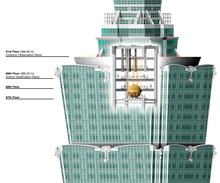
Back هيكلة المدن المرنة Arabic Resilience měst Czech تابآوری شهری Persian Ville résiliente French חוסן עירוני HE Ketangguhan kota ID ښاري مقاومت Pashto/Pushto 韧性城市 Chinese

Urban resilience has conventionally been used to describe the change in structure and function of urban areas. It is defined as the "measurable ability of any urban system, with its inhabitants, to maintain continuity through all shocks and stresses, while positively adapting and transforming towards sustainability".[1]
A resilient city is one that assesses, plans and acts to prepare for and respond to hazards, regardless of whether they are natural or human-made, sudden or slow-onset, expected or unexpected. Resilient cities are better positioned to protect and enhance people's lives, secure development gains, and drive positive change.[1]
Urban resilience is the ability of a city to survive, adapt, and grow in the face of chronic stresses and acute shocks. It refers to the capacity of a city's systems, institutions, businesses, communities, and individuals to withstand and respond to these stresses and shocks.
- ^ a b Mariani, Luisana. "Urban Resilience Hub". urbanresiliencehub.org. Retrieved 2018-04-04.